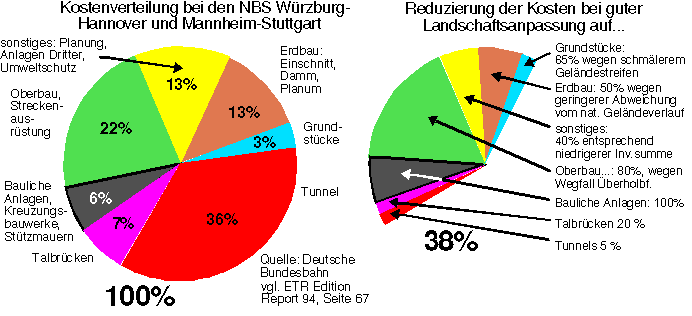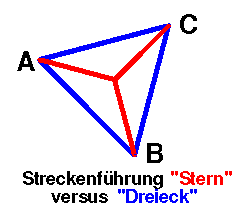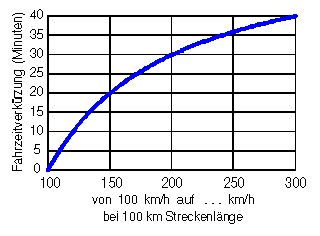





see article in german language.
an article in the german magazine "Internationales Verkehrswesen 4/1996"
Summary
In view of dwindling public funds, the trend towards special lines for slow goods trains and fast passenger trains and the introduction of high-speed-tilting rains, many of the plans for new railway lines in Germany are in need of revision. We now face the question of how to design profitable new lines under this new set of circumstances. It is possible to isolate three essential factors which influence the degree of profitability:
(1) Adaption to the landscape
The new railway line can be adapted much better to the landscape if it includes steep inclines and is designed to be used by tilting trains.

You can see the reduction of tunnels (red), bridges (cyan) and dams/cuttings (brown).
(2) Corridor grouping

It is time to consider wohle areas instead of individual point-to-point connections. In this way it is possible, by accepting a few slight detour, to reduce the length of the new lines by almost half, with individual sections being used by several corridors.
A sample for grouping corridors is the connection between three cities A, B and C. You can connect them by a triangle (blue) or a star (red). The star reduces the length of the new lines by 43% by accepting a time detour of 7%.
(3) Speed of old line
A corridor is especially worthwhile for a new line if the old line demands a particulaly low speed level.

Here you can see the profitability of a new line in minutes at a distance of 100 km (60 miles). If the old line has got a speed level of 100 km/h (60 mph), the new line (300 km/h 190 mph) is 40 minutes faster. If the speed level of the old line is 160 km/h (100 mph), the new line is only 17,5 minutes faster - the number of new passengers decreases to less than half.
Conclusion
The profitability of the overall project will depend on how dominant these three
influencing factors are in each individual project, and may vary from line to line
by a factor of up to 10. Within any one area of investigation, e.g. between Munich
and Leipzig, it may vary by a factor of 5.